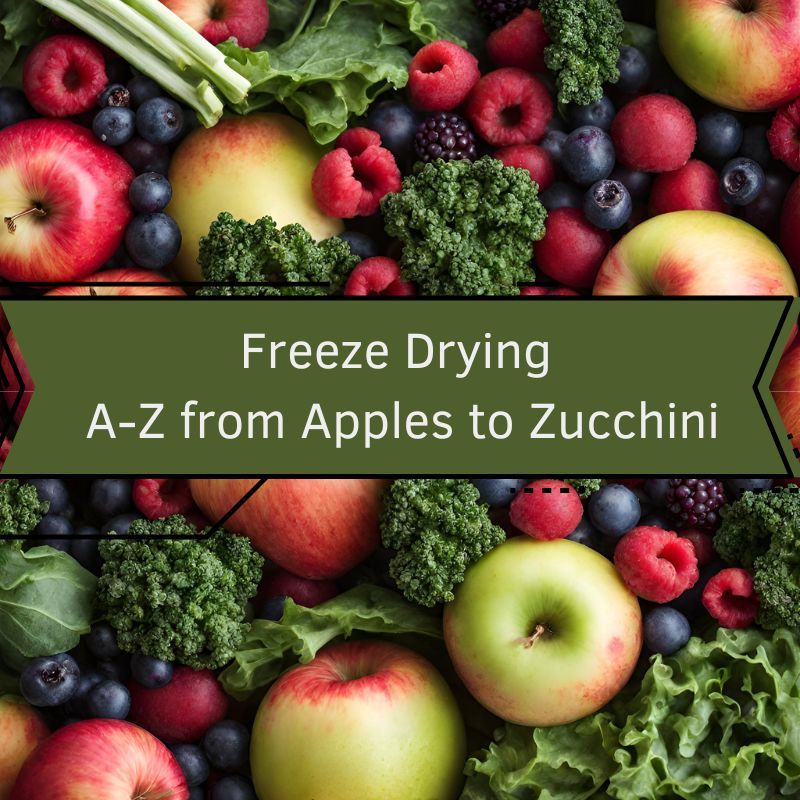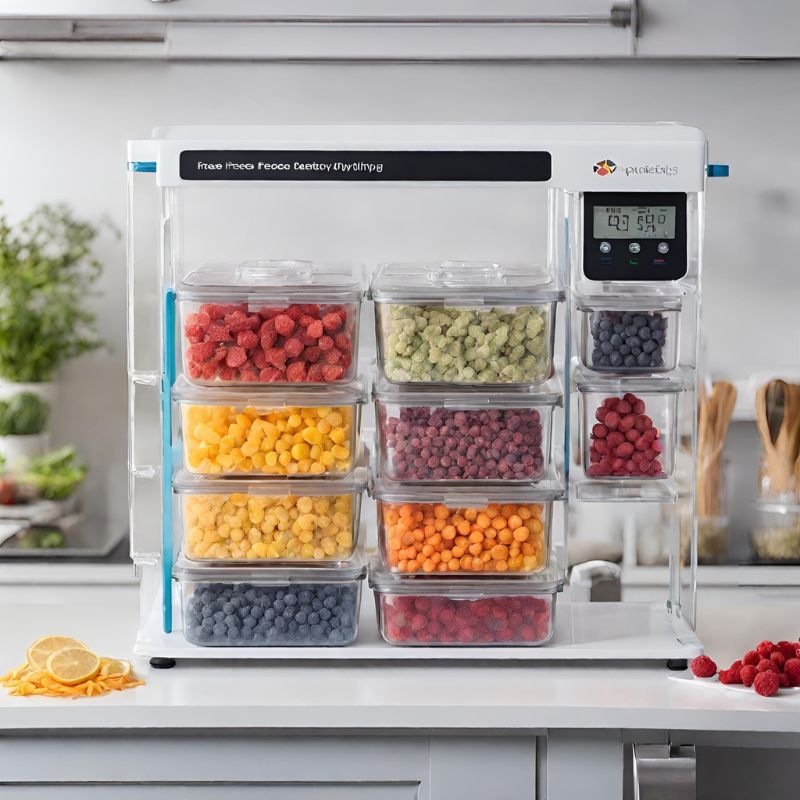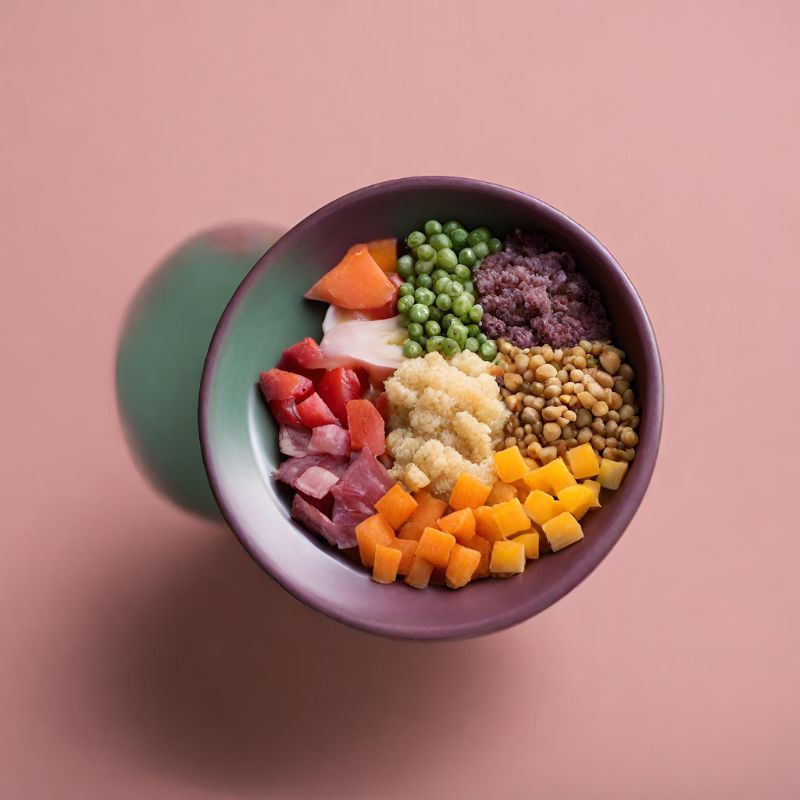
Key Takeaways
Freeze drying preserves food’s flavor, color, and most importantly, its nutritional value.
Setting up a home freeze-drying station is simple and can be done with basic equipment.
Freeze-dried foods can be stored for years, making them perfect for survival gardening and prepping.
Almost any food can be freeze-dried, including fruits like apples and vegetables like zucchini.
Integrating freeze-dried foods into your diet ensures a steady supply of nutrients, regardless of the season.
Unlock the Power of Freeze Drying for Your Survival Garden
When it comes to building a resilient food supply, there’s a method that stands out for its efficiency and effectiveness: freeze drying. This isn’t just about stashing away any food—it’s about preserving your harvest in the best way possible. Let me guide you through the essentials of turning your garden bounty into a long-lasting food reserve.
Why Freeze Drying Is a Game-Changer in Food Preservation
Imagine biting into an apple, crisp and sweet, just like the day it was picked, even though it’s been stored for years. That’s the magic of freeze drying. This method locks in flavor and nutrients, making it superior to traditional canning or dehydrating. Most importantly, freeze-dried foods retain up to 97% of their original nutritional content, which is essential for maintaining a healthy diet during tough times.
Preservation of Nutrients and Taste: A Critical Advantage
Why opt for freeze drying over other methods? The answer is simple: it keeps your food’s taste, texture, and nutrients almost intact. This means that when you rehydrate your food, it’s almost as good as fresh. This is crucial not just for enjoyment, but for the nutritional value that is vital in survival situations.
The Essentials of Freeze Drying at Home

Setting up a home freeze-drying station might sound like it’s straight out of a sci-fi novel, but it’s quite straightforward. You’ll need a freeze dryer, which can be a worthwhile investment if you’re serious about survival gardening. Don’t worry; I’ll walk you through the process step by step.
Setting Up Your Freeze-Drying Station: The Basics
First things first, you’ll need space for your freeze dryer. Choose a spot that’s clean, dry, and has access to power. Ensure the area is well-ventilated; freeze drying can release some heat. Also, keep in mind that the machine can be quite loud, so a space where noise won’t be an issue is ideal.
Step-by-Step Guide to Freeze Drying Apples
Let’s start with apples, a staple in any survival garden. After washing and coring your apples, slice them thinly for uniform drying. Spread the slices on the freeze dryer trays without overlapping. Once loaded, start the freeze dryer. The process will take about 24 hours. Afterward, you’ll have crisp, sweet apple slices that can last for years!
Remember, the key to successful freeze drying is uniformity. Thin, evenly sliced pieces ensure that all your food dries at the same rate.
Navigating the Nuances of Freeze Drying Zucchini
Now, for zucchini, which can be a bit trickier due to its high water content. Slice your zucchini and blanch it briefly to preserve color and nutrients. After blanching, chill the slices in ice water, pat them dry, and arrange them on the trays. Freeze drying zucchini will take longer than apples, sometimes up to 40 hours, but the result is worth the wait.
Wash and slice zucchini.
Blanch for two minutes.
Chill in ice water.
Dry and arrange on trays.
Freeze dry for 30-40 hours.
These steps are just the beginning. By mastering the freeze-drying process, you can ensure a diverse and nutritious food supply that’s ready whenever you need it. And trust me, the peace of mind that comes with a well-stocked survival garden is priceless.
Freeze drying is not just about long-term storage; it’s also about maintaining a diet rich in nutrients and variety. By incorporating freeze-dried foods into your daily meals, you’re ensuring that you have access to essential vitamins and minerals all year round, regardless of seasonal changes or unexpected events.
But how do you use freeze-dried foods in everyday cooking? It’s simpler than you might think. Rehydrating freeze-dried fruits and vegetables is straightforward: just soak them in water until they regain their original texture. You can then use them as you would fresh produce in your recipes.
What’s more, freeze-dried foods are incredibly versatile. You can grind freeze-dried fruits into a powder for a flavor boost in smoothies or baking. Vegetables can be added directly to soups and stews, where they’ll rehydrate as they cook. The possibilities are as limitless as your creativity in the kitchen.
Apples
Rehydrate for snacks or pies
Grind into powder for flavoring
Add to oatmeal or cereal
Apples are a favorite for their sweet-tart flavor and versatility. Rehydrated freeze-dried apples can be used in apple pies, tarts, or simply as a chewy, healthy snack. Apple powder can enhance the taste of baked goods or be sprinkled on top of yogurt and cereal for a nutritious start to the day.
And let’s not forget about apple chips – a delightful crunch that’s perfect for on-the-go snacking. Kids love them, and they’re a fantastic way to get your daily fruit intake without any added preservatives or sugars.
Berries
Berries are packed with antioxidants and vitamins, making them a superfood in many circles. When freeze-dried, berries retain these essential nutrients and can be enjoyed year-round. Toss them into a salad for a burst of color and flavor, or rehydrate them for use in smoothies and desserts.
Vegetables: Ensuring Crispness and Flavor
Freeze drying vegetables is a game-changer for those looking to maintain a healthy diet. The process preserves the crispness and flavor, ensuring that your dishes are always vibrant and tasty. Vegetables like kale and zucchini can be freeze-dried and then rehydrated for use in a variety of dishes, from soups to casseroles.
Kale
Kale is a nutrient powerhouse, but it can be tough and bitter when not fresh. Freeze-dried kale, however, retains its nutrients and can be crumbled into dishes like smoothies, soups, and pasta for an easy health boost.
Zucchini
Zucchini is another vegetable that benefits greatly from freeze drying. It can be rehydrated for use in stir-fries, breads, and even as a pasta substitute. The key is to slice it thinly before freeze drying, ensuring even drying and easy rehydration.
Integrating Freeze-Dried Foods into Your Daily Diet

When you think of freeze-dried food, you might picture astronauts or camping trips. But it’s time to broaden that view. Freeze-dried foods can be a staple in your everyday diet, offering convenience without compromising on nutrition.
Creating Nutrient-Rich Meals with Freeze-Dried Ingredients
Whether you’re whipping up a quick dinner or planning your weekly meals, freeze-dried ingredients can save the day. They rehydrate quickly, don’t require peeling or chopping, and have a long shelf life, making them a practical choice for busy households.
Convenient Snacking: Healthy Options On the Go
For those times when you need a quick snack, freeze-dried fruits and veggies are a great option. They’re lightweight, portable, and don’t require refrigeration, making them ideal for hiking, travel, or just a busy day running errands.
Preserving Abundance for Seasons of Scarcity
One of the core principles of survival gardening is to preserve today’s abundance for tomorrow’s scarcity. Freeze drying is an excellent way to achieve this. By converting your fresh produce into a form that can last for years, you’re creating a buffer against future uncertainties.
Planning Your Garden with Freeze Drying in Mind
When you’re planning your garden, consider which crops will freeze dry well. Fruits like apples and berries, and vegetables like kale and zucchini, are all excellent choices. Plan your planting and harvesting schedule to maximize the amount of food you can preserve.
Also, think about the variety. A diverse selection of freeze-dried fruits and vegetables will ensure that you have a well-rounded diet year-round. This is not only good for your health but also keeps mealtime interesting.
Storing and Organizing Your Freeze-Dried Bounty
Proper storage is key to maintaining the quality of your freeze-dried foods. Store them in airtight containers in a cool, dark place. Label each container with the contents and the date of freeze drying. Organization will make it easier to rotate your stock and keep track of what you have on hand.
Proper storage is key to maintaining the quality of your freeze-dried foods. Store them in airtight containers in a cool, dark place. Label each container with the contents and the date of freeze drying. Organization will make it easier to rotate your stock and keep track of what you have on hand.
Empowering Your Survival Strategy with Freeze-Dried Foods
Now, let’s get down to the nitty-gritty of why freeze-dried foods are so powerful for survival strategies. These foods are not only space-efficient and lightweight, but they also offer an unparalleled shelf life, which can be a lifesaver in times of crisis.
Building a Diverse Emergency Food Supply
When you’re prepping for emergencies, diversity is key. A well-rounded food supply means you’ll have a variety of nutrients and flavors to keep you healthy and satisfied. Freeze-dried fruits, vegetables, meats, and even full meals can give you the variety you need to weather any storm.
Most importantly, because freeze-dried foods retain their nutritional value, you’ll be well-equipped to maintain a balanced diet, even in survival scenarios. Plus, the lightweight nature of freeze-dried foods makes them easy to transport, should you need to relocate in a hurry.
Ensuring Food Security with Long-Term Storage Solutions
Freeze-dried foods can last up to 25 years or more when stored correctly. This incredible shelf life ensures that you’ll have access to food when it’s not readily available. During times of scarcity, whether due to natural disasters or supply chain issues, your freeze-dried food stash can provide security and peace of mind.
Common Questions on Freeze Drying for Survival Gardening
There are always questions when it comes to new methods of food preservation. Let’s tackle some of the most common queries about freeze drying for survival gardening.
Can I Freeze Dry Fruits and Vegetables Together?
Yes, you can freeze dry fruits and vegetables together, but it’s best to separate them by type due to varying moisture content and drying times. This ensures that each item is freeze-dried properly, maintaining its quality and extending its shelf life.
How Long Does Freeze-Dried Food Last?
When stored in airtight containers in a cool, dark place, freeze-dried food can last up to 25 years or more. This is because the freeze-drying process removes moisture, which is a primary cause of food spoilage.
Is a Home Freeze Dryer Worth the Investment?
For serious survival gardeners and preppers, a home freeze dryer can be a game-changing investment. While the initial cost may be high, the long-term savings and security it provides can be invaluable. Plus, it allows you to preserve your own harvest, which is both rewarding and practical.
What Foods Should Not Be Freeze Dried?
While most foods can be freeze-dried, some don’t fare well in the process. Foods with high fat or high sugar content, like butter or honey, can be difficult to freeze dry and may not store as well. It’s best to stick to lean meats, fruits, vegetables, and grains.
How Do I Rehydrate Freeze-Dried Foods for Eating?
Rehydrating freeze-dried foods is straightforward: simply add water and wait for a few minutes. For most fruits and vegetables, soaking in water will restore them to a state similar to their original texture and flavor. Meats and full meals may require hot water to rehydrate fully.
By now, you should have a solid understanding of the power of freeze drying in survival gardening and prepping. Remember, it’s not just about preserving food; it’s about ensuring a stable, nutritious diet in any situation. With the right knowledge and tools, you can turn your garden into a dependable source of sustenance for years to come.
Freeze drying is an excellent method for preserving a wide variety of foods, making it a great option for survival gardening and prepping. By removing moisture from food through a special drying process, the food’s nutritional value, shape, and flavor are largely retained. This process also extends the shelf life of the food, which can be crucial in emergency situations. For those interested in learning more about this preservation method, Let’s Preserve: Freeze-Drying offers a comprehensive guide.







Leave a Reply